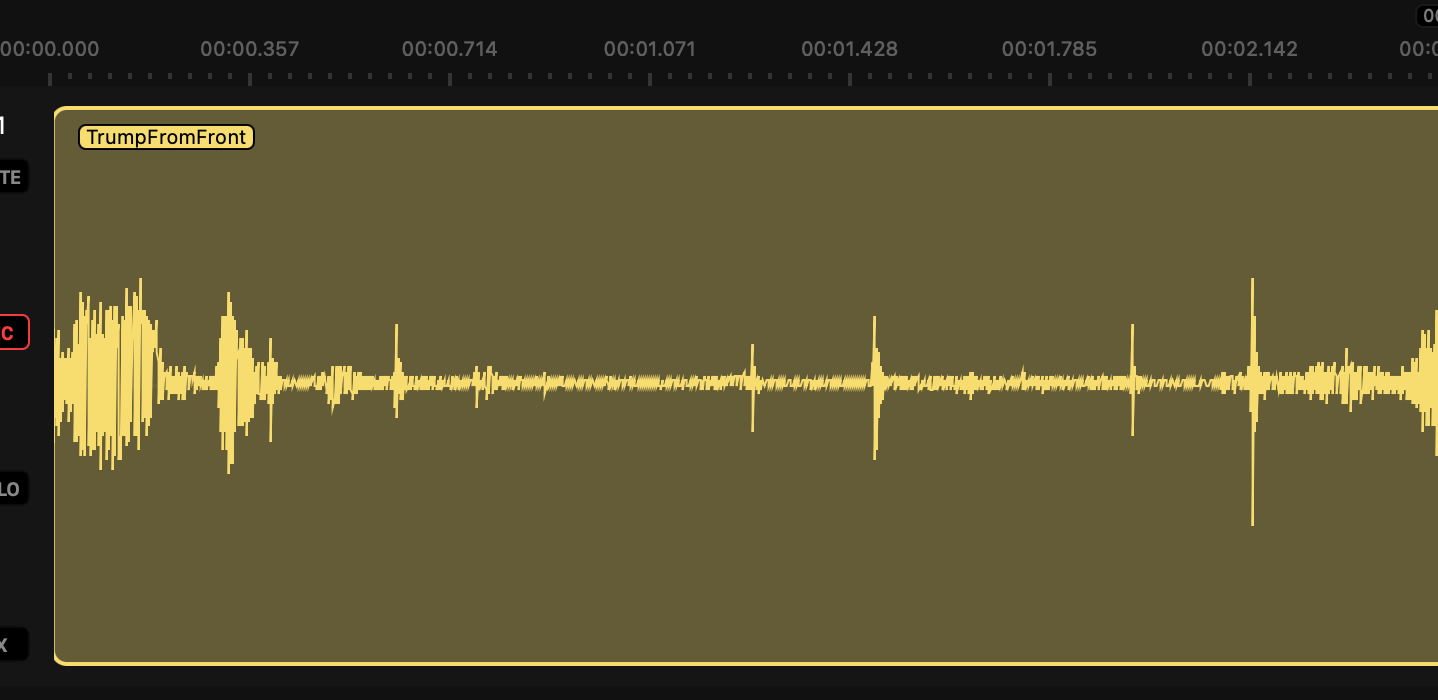Problem
A popping noise is registered in a microphone as a supersonic rifle bullet passes near it. 220 milliseconds later, the report from the rifle is also recorded. How far away from the microphone is the rifle if:
The rifle bullet passes at 3300 feet per second?
The rifle bullet passes at 2500 feet per second?
The speed of sound in air is 1125 ft/s
Solution
We’re going to define some things:
And because the bullet is supersonic and positive numbers give us warm fuzzies:
We’re going to assume the bullet passes close enough to the microphone that we can ignore the time its sound propagates to it. We’re wanting to find:
Because presumably we’re not moving the microphone around during those milliseconds between sounds. We don’t have any handle on the times themselves, only know their difference. So lets free them up:
And similar for sound. So then we can do:
Alright! Everything on the left there is stuff we know from the problem:
#1: bullet velocity is 3300 ft/s:
#2: bullet velocity is 2500 ft/s:
I suppose you may have some idea why we walked through this. Amateur acoustic analyzers have been posting studies of the events of a week ago, and suggesting very different things than the TV says. But now you know how they are turning things like this:
…into guesses how far a shooter was from the microphone. Note this method relies on assuming you can ignore how far away the bullet was from the microphone (i.e. negligibly close). The farther away from the microphone the bullet passes, and the sonic pops from bullets it appears can be quite loud, the larger your overestimate of shooter distance will be. For example if the bullet which made the traces above passed 100 feet away from the microphone, you should subtract the time it took sound to travel that distance (about 89 ms) from the ΔT you measured.
Also very much keep in mind this tells you nothing about direction, only radius from the microphone.
But now armed with this, you can check the work of folks like Chris Martenson and Mike Adams. I encourage you to critically watch them and follow along. If you have a high school kid taking physics, have them work through this problem and watch with you.
And ask questions like
How do these conclusions change if bullets passed further from the microphone than you’re assuming?
If many shots toward the stage, why no secret service injuries?
Can “snap” and “pop”s be paired differently?
Could bullets have passed overhead from or to other places and directions?
Should bullet impacts be heard in audio?
Why is this discussion being allowed if entities in power were apparently willing to kill the leading Presidential candidate?
And so on.
Oh.
Extra credit: Why would writing on this subject cause me to wonder about: this?
Two reasons.





50 yrs removed from solving equations, I took a few days to dig in to "Read and Study."
Thx for the challenge (my brain is aflutter and my Spidey sense tells me we won't be hearing anything official, nor will the 'reports' be declassified this century.)
I have the third and final question for you DrFG/King Arthur:
"What is the air-speed velocity of an unladen swallow?"
What should be the value of delta T to have the shooter in the reported distance (150 feet)?
#1 87.8 ms
#2 90.9 ms
It's not possible to have those bullets coming from the patsy-shooter if the delay is correctly measured as 220ms.
I wonder: were there more shooters farther away, where no one was looking or recording?
And who killed the patsy and when? Was it on the roof where he was shot dead? Is there any chance the same shooter who shot at Trump and the fireman also shot the patsy?